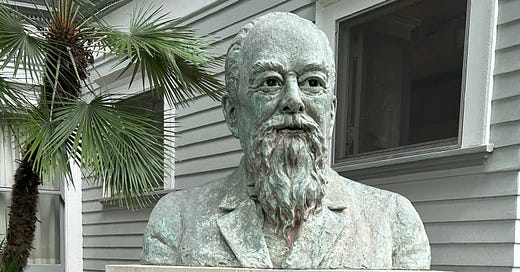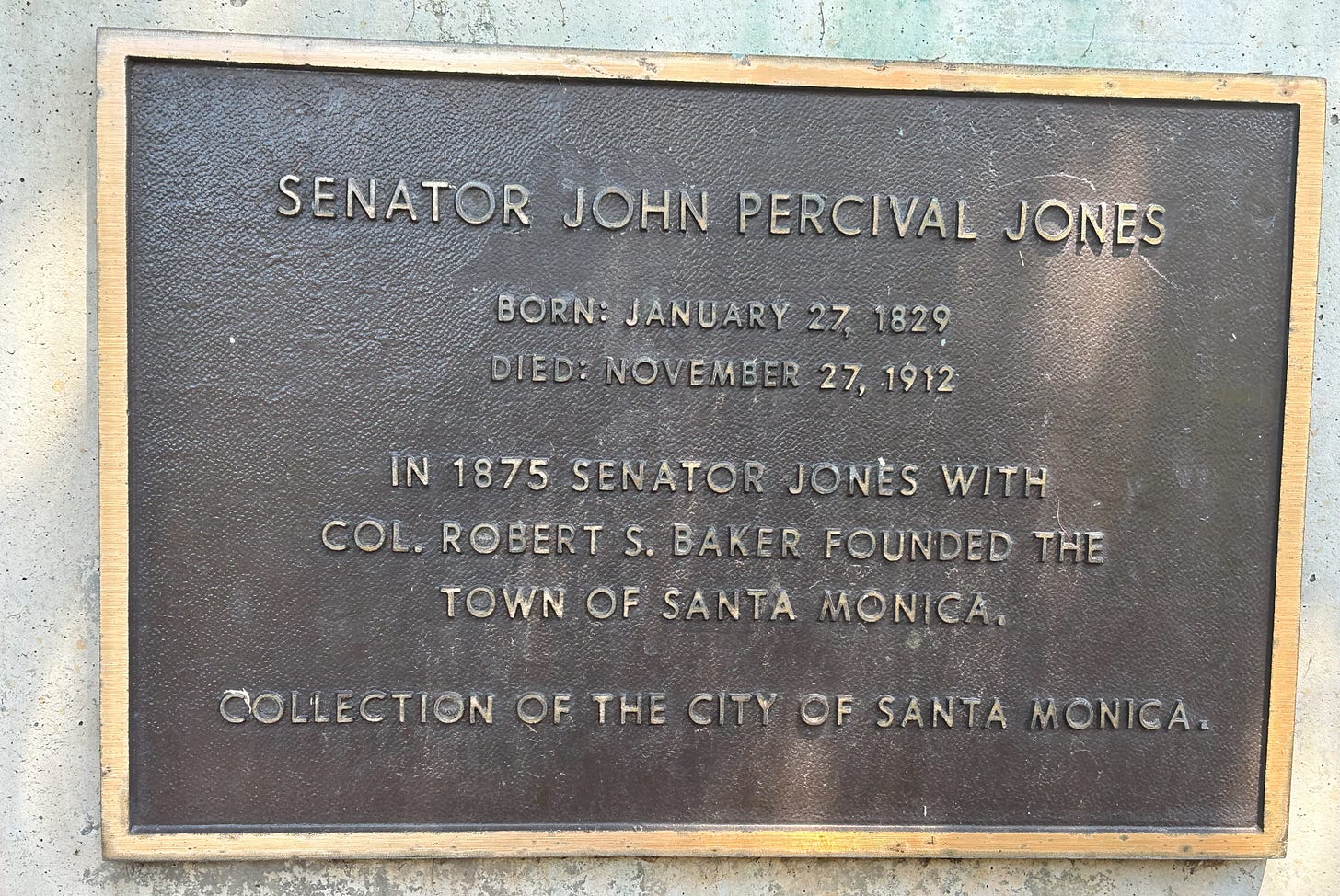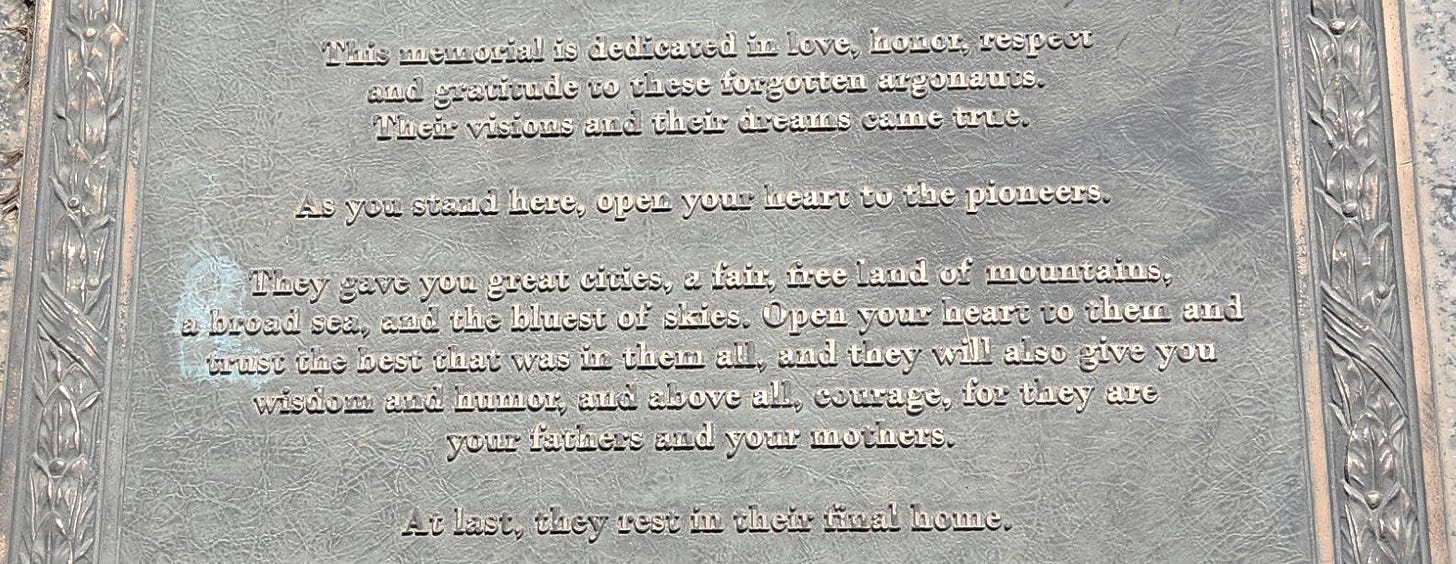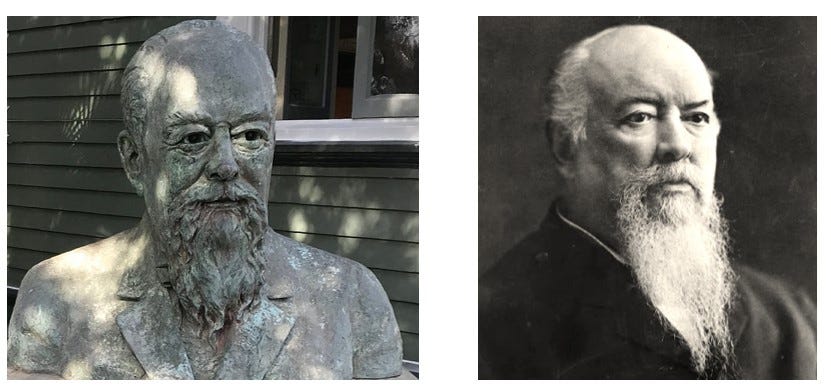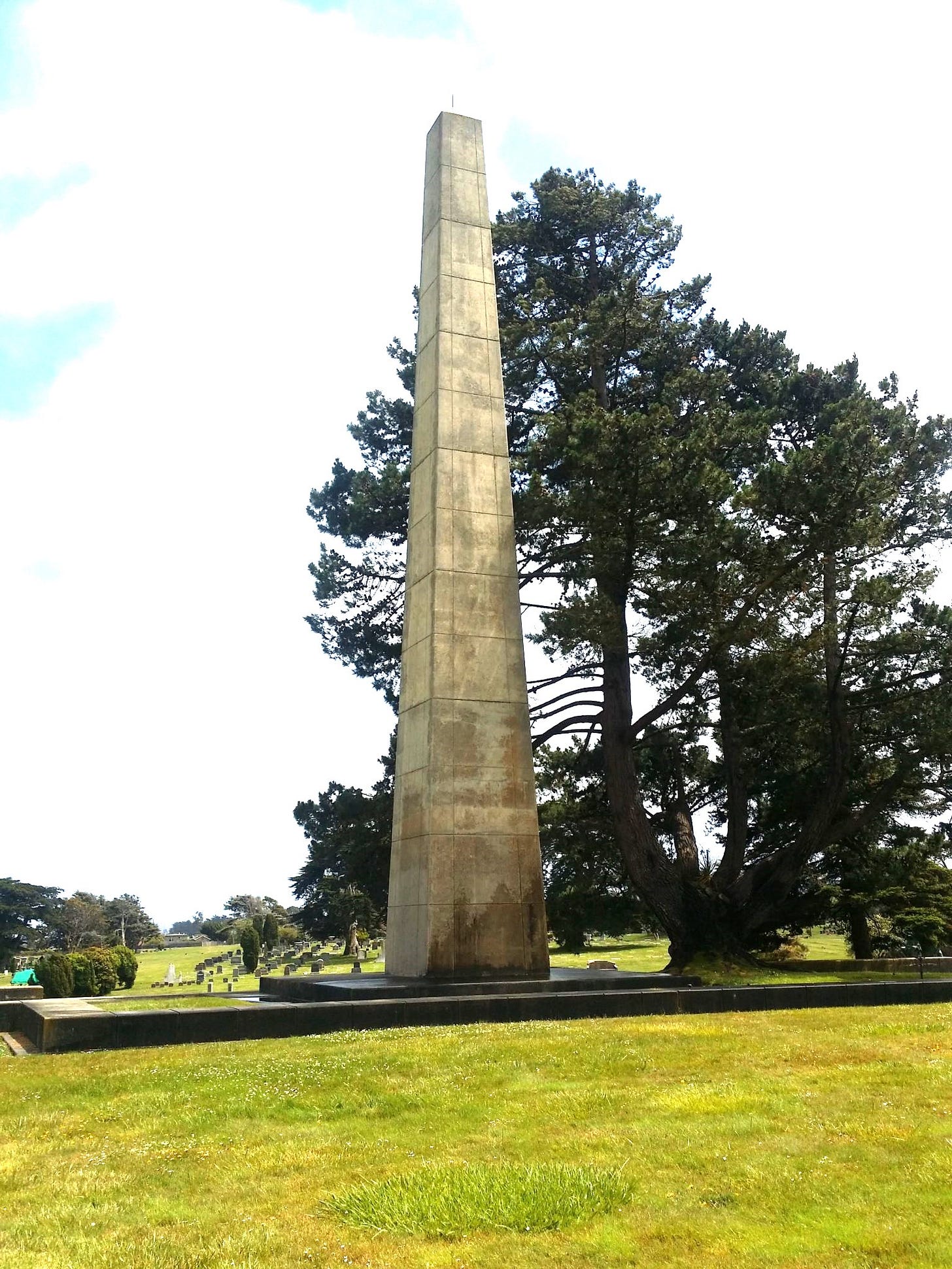A soft green covers the bust and the body of Santa Monica founder John P. Jones.
In 1966, Gregory Jones (1894 - 1978) and Dorothy Jones Reynold Boden (1895 - 1985), children of Roy Jones (1869 – 1947), commission a bust of their grandfather Senator John Percival Jones (1829 – 1912), founder of the town of Santa Monica, from Holger and Helen Jensen.1 They donate the bronze bust to the City to be placed in a prominent location on the new Third Street Mall.
In the late 1980s, the Third Street Mall is re-imagined and the Jones bust is put in storage. In about 2000, the bust is retrieved from storage, moved to Ocean Park, and placed on a concrete pedestal in front of the California Heritage Museum.2 A bronze plaque explains Jones’ connection to Santa Monica.
Jones retires from the US Senate in 1902, and in July 1912 sells his Santa Monica interests.3 Jones and wife4 move to the fashionable West Adams district.5 The move is meant to be only temporary, but Jones dies there in November 1912. His cremated remains are interred in a mausoleum at the Laurel Hill Cemetery in San Francisco. Laurel Hill Cemetery is the final resting place of the builders of the West, civic and military leaders, jurists, inventors, artists, and eleven United States Senators.
In 1937 the San Francisco Board of Supervisors orders Laurel Hill Cemetery to remove all its burials and abandon the cemetery. Removal of remains begins in 1939, but with World War II priorities change, and the remains are put in storage for six years. After the war, John Percival Jones is reinterred beneath a communal ‘pioneers’ mound at Cypress Lawn Cemetery.6 A bronze plaque explains the re-interment of the Laurel Hill Cemetery pioneers.
Denmark native Holger Jensen (1894 – 1980) meets Illinois born Helen Webster (1896 – 1990) when they are students at the Art Institute of Chicago and they marry in 1925. Due to Holger’s frail health, they move to Rustic Canyon in 1928. They often collaborate on portrait busts and other commissions.
Holger Jensen, known for portrait busts and animal sculptures, dies in Chehalis, WA. Helen Jensen, whose forte is portrait busts, is active in Rustic Canyon until the 1970s, then moves to Centralia, WA.
The California Heritage Museum is located in the Roy Jones house - the house in which Gregory and Dorothy Jones are born. The house is originally located at 1007 Ocean Ave and moved to its current site in 1977.
Jones sells his Miramar Santa Monica residence to King Gillette.
Georgina Frances Sullivan (1853 – 1936) marries John P. Jones (his second wife) in 1875, and presides over their Santa Monica home – Miramar. Mother of three daughters:
Alice - wife of Frederick MacMonnies, a noted American sculptor;
Marion - tennis player and wife of Robert David Farquhar, a well-known Los Angeles architect; and
Georgina - wife of Robert K. Walton.
With the death of Jones in 1912, Georgina moves to New York City where she dies in 1936.
Jones and his wife move to the Hancock Banning (1865 - 1925) residence at 240 W. Adams.
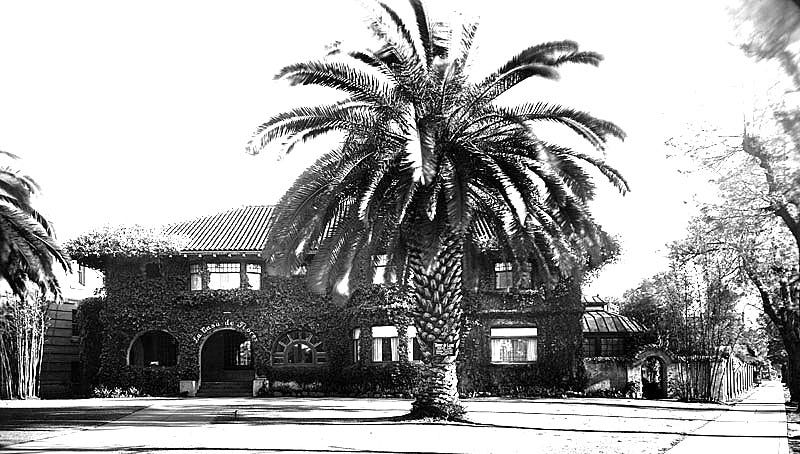
In 1937, Laurel Hill Cemetery, along with other cemeteries in San Francisco, is ordered by the San Francisco Board of Supervisors to remove all its burials and abandon the cemetery. Its directors chose Cypress Lawn to receive the evicted. Between 1939 and 1940, some 35,000 bodies buried at Laurel Hill are removed, placed in redwood coffins, and taken to Colma; where they were stored for six years - World War II delays the construction of a new burial chamber. After the war the cost to build is too high - the remains are placed, without individual memorialization, beneath a 5-acre burial mound at Cypress Lawn. At the top of the mound is an obelisk marking the 1992 centennial of Cypress Lawn. Officially named the Laurel Hill Mound in 1954 as a tribute to the pioneers of the Laurel Hill Cemetery.
